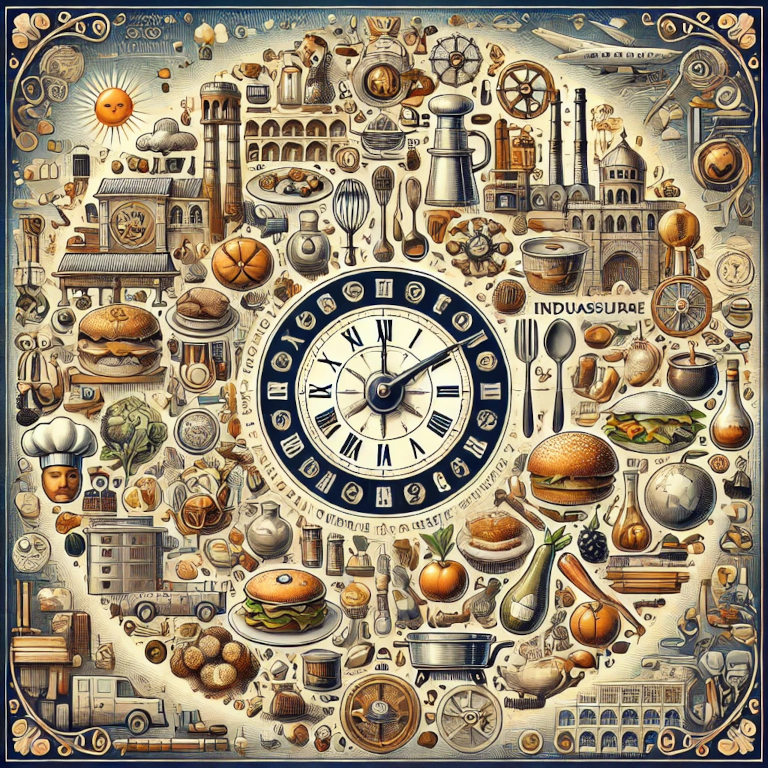Culinary history offers a fascinating glimpse into the evolution of food and cooking practices across different cultures and eras. From ancient times to the modern day, the way we prepare and consume food has been shaped by social, economic, and technological changes. As an expert in Food and Cooking, this article delves into the rich history of culinary arts, exploring key developments and their impact on contemporary cuisine.
The Origins of Culinary Practices
The history of cooking dates back to prehistoric times when early humans discovered the transformative power of fire. Cooking not only made food more palatable but also unlocked nutritional benefits, playing a crucial role in human evolution. Key milestones in early culinary history include:
- Use of Fire: The discovery of fire allowed early humans to cook meat and plant-based foods, enhancing flavor and digestibility.
- Development of Tools: The creation of basic tools like knives and grinding stones facilitated more sophisticated food preparation techniques.
- Agriculture and Domestication: The advent of agriculture around 10,000 BCE marked a significant shift from foraging to farming, leading to the cultivation of staple crops such as wheat, rice, and maize.
Ancient Civilizations and Culinary Innovation
As civilizations emerged, so did more complex culinary traditions. Ancient societies like Egypt, Greece, Rome, and China made significant contributions to the culinary arts:
- Ancient Egypt: The Egyptians were known for their bread-making skills and use of ingredients like honey, dates, and herbs. They also developed methods of food preservation, such as drying and salting.
- Ancient Greece: Greek cuisine emphasized the use of fresh, local ingredients. Olive oil, wine, and seafood were staples, and the Greeks introduced the concept of the symposium, a social gathering centered around food and drink.
- Ancient Rome: Roman culinary practices were influenced by the diverse cultures within the empire. The Romans were known for their elaborate feasts, use of exotic spices, and development of techniques like baking and fermenting.
- Ancient China: Chinese cuisine, with its emphasis on balance and harmony, incorporated a variety of cooking methods, including steaming, frying, and braising. The use of soy sauce, noodles, and tea became hallmarks of Chinese culinary tradition.
The Middle Ages and the Renaissance
The Middle Ages saw the development of new culinary techniques and the introduction of exotic ingredients through trade:
- Medieval Europe: The medieval diet was heavily influenced by social status, with the wealthy enjoying a diverse range of meats, spices, and pastries, while the poor subsisted on grains and vegetables. Spices like cinnamon, ginger, and black pepper were highly prized and often used to showcase wealth.
- Islamic Golden Age: During the Islamic Golden Age, culinary arts flourished, with the introduction of new ingredients such as citrus fruits, rice, and sugar. The Abbasid Caliphate’s influence extended from Spain to India, promoting culinary exchanges and innovations.
- Renaissance Europe: The Renaissance period marked a revival of interest in art, science, and cuisine. The introduction of New World ingredients like tomatoes, potatoes, and chocolate transformed European diets. The publication of cookbooks, such as Bartolomeo Scappi’s “Opera dell’arte del cucinare,” documented and popularized culinary techniques.
The Industrial Revolution and Modern Cuisine
The Industrial Revolution brought about significant changes in food production and consumption:
- Mass Production: Advances in technology enabled the mass production and distribution of food. Canning, refrigeration, and pasteurization extended the shelf life of perishable goods, making a wider variety of foods accessible to the public.
- Restaurant Culture: The rise of the middle class and urbanization led to the proliferation of restaurants and cafes. This period saw the birth of haute cuisine in France, with chefs like Auguste Escoffier standardizing recipes and kitchen practices.
- Globalization: The 20th and 21st centuries have seen increased globalization, leading to the fusion of culinary traditions and the popularization of international cuisines. Sushi, pizza, and tacos, once regional specialties, have become global favorites.
Key Figures in Culinary History
Several individuals have made significant contributions to the culinary arts:
- Marie-Antoine Carême: Known as the “King of Chefs and the Chef of Kings,” Carême is credited with developing grande cuisine, a highly elaborate and stylized form of French cooking.
- Auguste Escoffier: Often referred to as the father of modern French cuisine, Escoffier revolutionized professional kitchen management and simplified French cooking techniques.
- Julia Child: An American chef, author, and television personality, Child introduced French cuisine to the American public through her book “Mastering the Art of French Cooking” and her television show “The French Chef.”
The Future of Culinary Arts
As we look to the future, several trends are shaping the culinary landscape:
- Sustainability: There is a growing emphasis on sustainable practices, including farm-to-table dining, zero-waste cooking, and the use of local and seasonal ingredients.
- Health and Wellness: The focus on health and wellness has led to increased demand for nutritious, plant-based, and allergen-free foods.
- Technological Innovation: Advances in food technology, such as 3D food printing, lab-grown meat, and AI-driven kitchen appliances, are poised to revolutionize the way we cook and eat.
Summary
The history of culinary arts is a rich tapestry woven from diverse cultures, innovations, and traditions. From the use of fire in prehistoric times to the modern emphasis on sustainability and technology, culinary history reflects the evolving relationship between humans and food. By understanding this history, we can better appreciate the culinary techniques and flavors that define contemporary cuisine.






